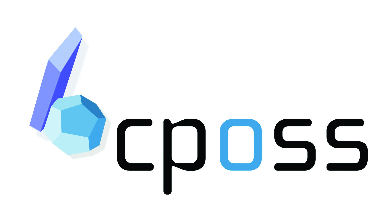Control and Prediction of the Organic Solid State
Multi-Disciplinary Experimental and Computational Studies
Please see the publications for full details of specific examples.
Computational crystal structure prediction
CPOSS has developed methods of computing the crystal energy landscape, a set of energetically feasible crystal structures, for an increasing range of organic molecules, salts and hydrates. The computational prediction includes estimates of mechanical properties, free energies, and vapour growth rates. This data is stored in our database and dataportal. By examining the packing motifs of these crystal structures, and comparing with the experimentally known forms, we have developed an understanding of how the crystal energy landscape can be used as a complement to solid form screening. Sometimes there is a clear prediction of the crystal structure, and we have had many successes in predicting a crystal structures in advance of or independently of, their experimental determination. In other cases, the crystal energy landscape shows that the molecule does not have a uniquely good way of packing with itself, this provides a rationalisation of the more complex solid state of the molecule, predicting the motifs that are found in a range of solvates and polymorphs.
Full details of the calculations carried out are given under the notes on the database section of this site.
Automated parallel crystallisation platform
One of the problems at the outset of the project, was the lack of systems for which all polymorphs, hydrates, solvates and co-crystals were known. By developing our automated crystallisation platform and using it in conjunction with a range of other crystllisation methods and the computed crystal energy landscapes, there are now several systems whose solid forms are known and rationalised in an unprecedented level of detail.
The automated parallel crystallisation platform was developed in conjunction with Chemspeed. It is medium throughput (as opposed to the high throughput systems used by many polymorph screening companies). Its main advantage over manual crystallisation screens is that the conditions can be finely controlled, and are automatically recorded for each experiment along with the corresponding powder pattern. The reproducibility and range of experiments is far superior to anything in the manual crystallisation laboratory could achieve. Furthermore, analysis of which crystallisation conditions produce which solid form are providing hypotheses as to the kinetic factors that control polymorph formation and aiding finding additional forms.
Further details of the experimental method are available, along with a link to the paper describing the protocol in full, and a list of compounds whose crystallisation/solid form correlations are published.
Nucleation studies
Computational Crystal Structure Prediction is renowned for finding far more thermodynamically possible crystal structures than are ever observed experimentally. Although many are very similar (containing identical ribbons or sheets) and could probably easily rearrange to give one of the known structures, there are still many potential structures that are never observed. Thus, determining the kinetic factors that give rise to metastable polymorphs is the major challenge required to convert methods of computing the crystal energy landscape (and thereby predicting the most thermodynamically stable structure) into a method of polymorph prediction.
One hypothesis for kinetic control of some forms of polymorphism this is that solute-solvent interactions in solution determine the structures of the crystal nucleus and hence the polymorphs. Determining how molecules come together in a crystallising solution can only determined experimentally in favourable cases, and so we have been studying this computationally by Molecular Dynamics simulations. Such of 5-fluorouracil in water, dry nitromethane and wet nitromethane enabled rationalisation of the predominance of form 1 when water is present. Molecular dynamics, in conjunction with in situ NMR work, has also shown that the polymorphism of glycine cannot be simply rationalised by the formation dimers of glycine in certain solutions.
Powder diffraction studies
Structure solution from powder X-ray diffraction is fast becoming a routine method when crystals suitable for single-crystal X-ray diffraction cannot be obtained. However, there remain structures whose powder pattern is difficult or impossible to index (i.e. determine the unit cell), in which case full structure solution is well nigh impossible. For these cases, CPOSS have developed methods of comparing experimental powder patterns with of the predicted thermodynamically feasible structures. By finding a pattern that matching the experimental one, it is possible to use this to solve the structure from the powder data.
Enter secure pages (For project members only - password required)
© UCL Chemistry Department 2004. This page was last updated on 17 August, 2017. If you have any problems with this page please email the WebMaster
